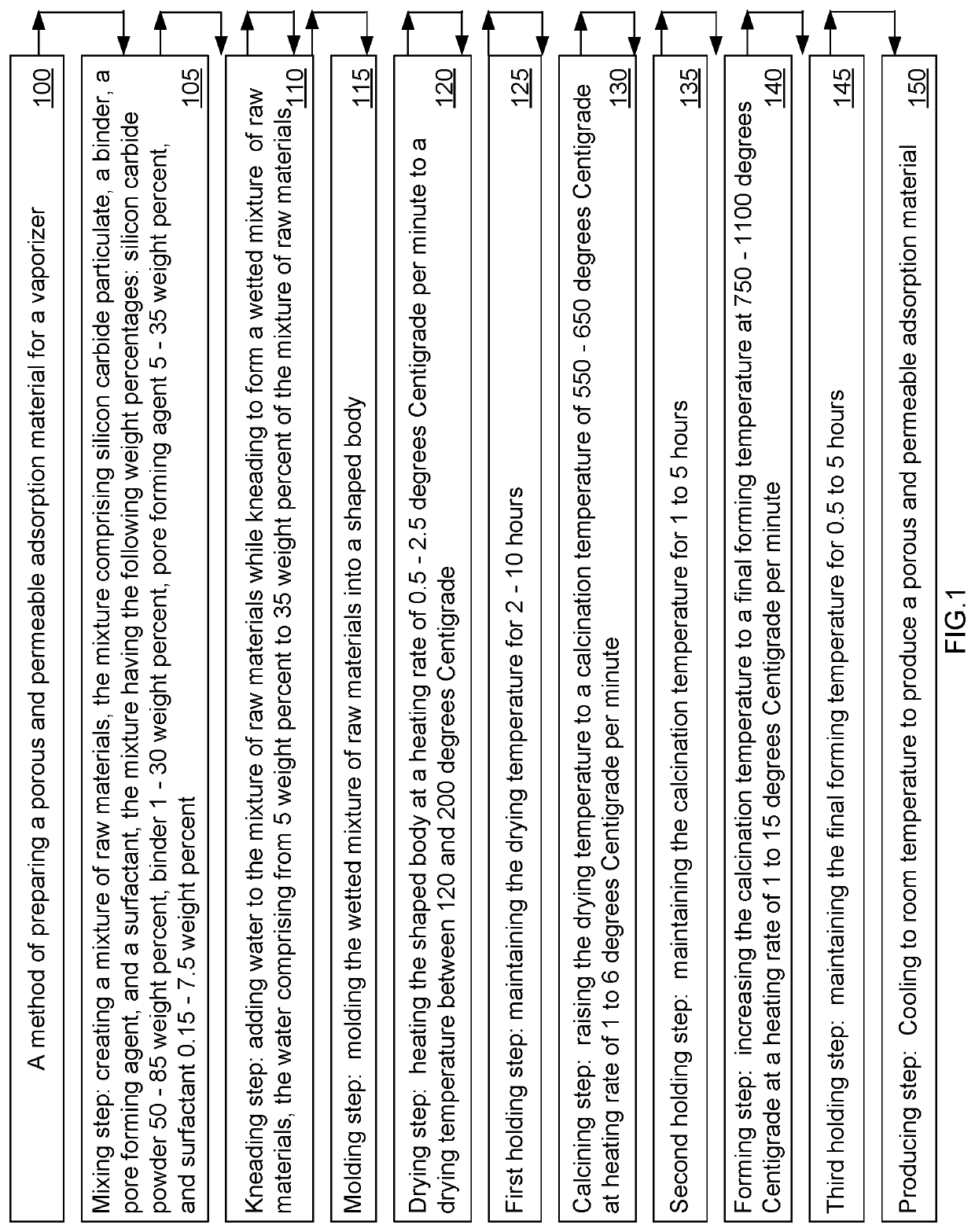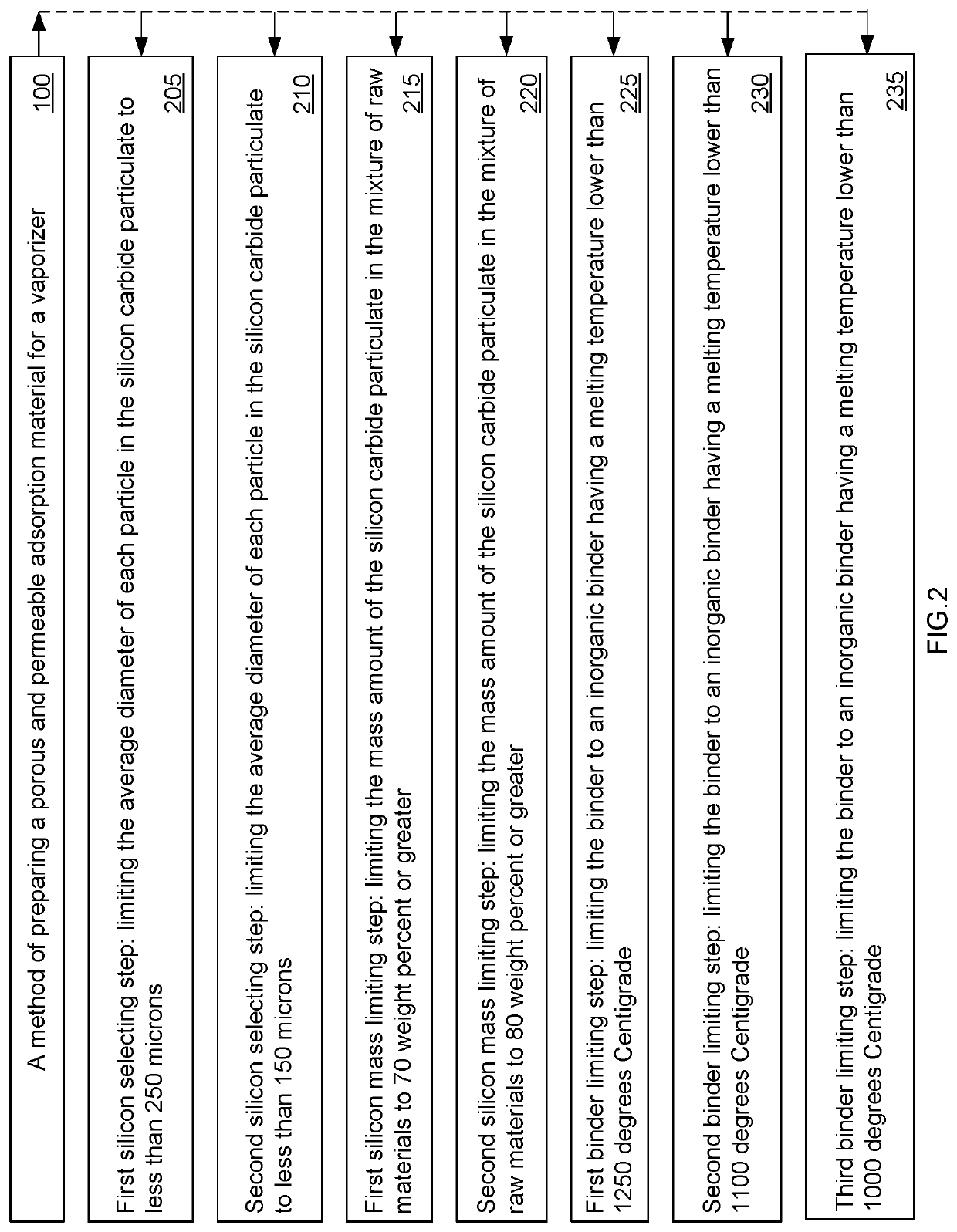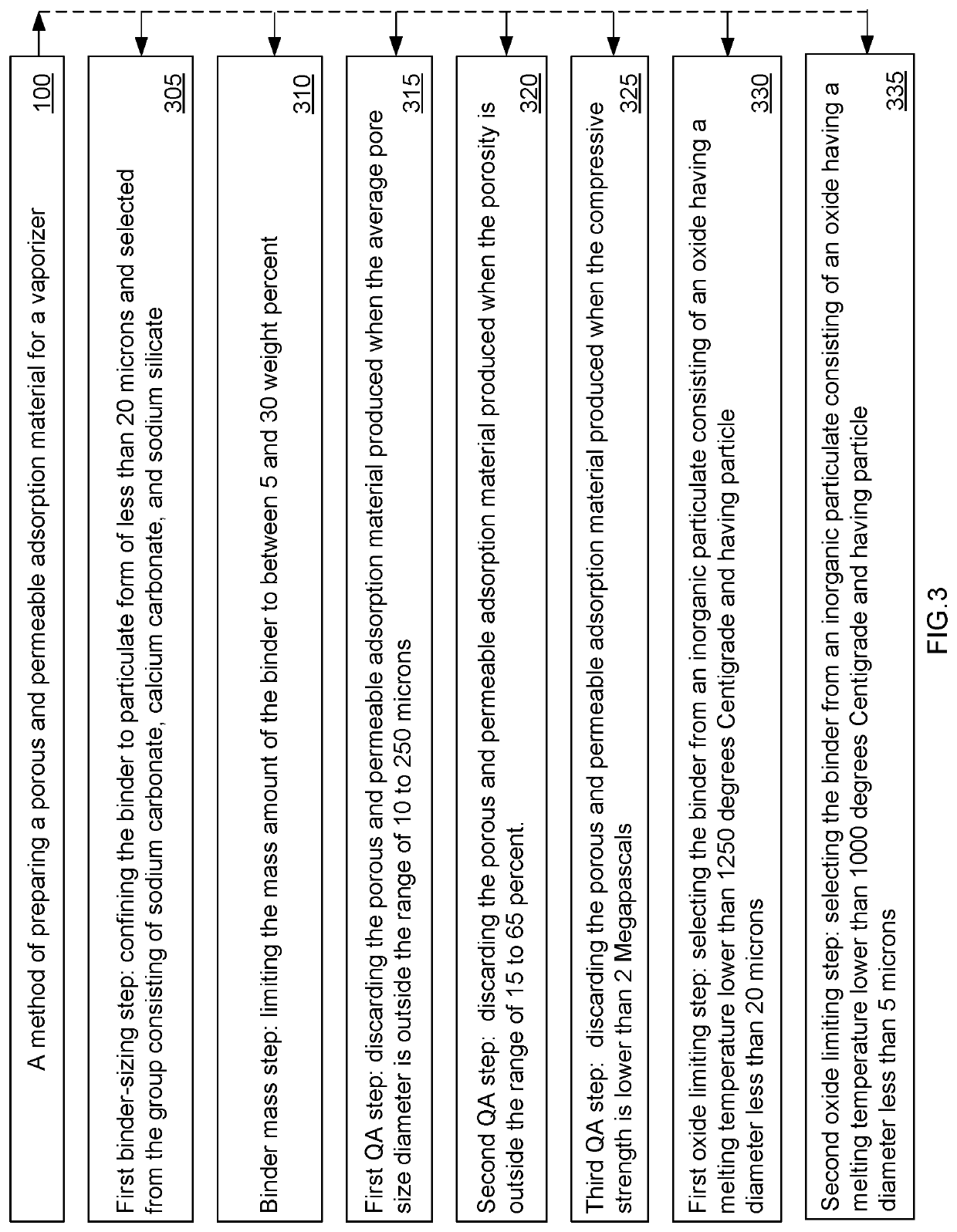Method of preparing an adsorption material for a vaporizer
a technology of adsorption material and vaporizer, which is applied in the field of matter composition, can solve the problems of incomplete vaporization of liquid, unfavorable burnt flavor and health issues, and non-uniform temperature distribution of adsorption material, and achieve high production costs, insufficient porosity, and high preparation temperature
- Summary
- Abstract
- Description
- Claims
- Application Information
AI Technical Summary
Benefits of technology
Problems solved by technology
Method used
Image
Examples
example 1
[0066]In a first example of the method of making or preparing a porous and permeable adsorption material for a vaporizer, a mixture was made of 100 grams of silicon carbide with an average particle size of 120 microns, 9 grams of sodium carbonate with an average particle size of 2.6 microns, 32 grams of corn starch with an average particle size of 38 microns, and 3 grams of sodium dodecylbenzene sulfonates. Then, 35 grams of water was added to the mixture while the mixture was kneaded for 20 minutes. Then, the wet mixture was molded into a cylindrically-shaped body by extrusion using a pressure of 5 megapascals. The cylindrically-shaped body was then placed in a heating furnace under atmospheric environment and heated to 120 degrees Centigrade at a heating rate of 0.5 degrees Centigrade per minute. The heated cylindrically-shaped body was held at 120 degrees Centigrade for 2 hours. Then, the temperature in the furnace holding the cylindrically-shaped body was raised to 600 degrees C...
example 2
[0067]In a first example of the method of making or preparing a porous and permeable adsorption material for a vaporizer, a mixture was made of 100 grams of silicon carbide with an average particle size of 80 microns, 6 grams of calcium carbonate with an average particle size of 4.0 microns, 15 grams of wood fiber with an average diameter of 85 microns and an average length of 300 microns, and 2 grams of sodium dodecylbenzene sulfonates. Then, 25 grams of water was added while kneading the wetted mixture for 30 minutes. Then, the wet mixture was molded into a cylindrically-shaped body by extrusion under a pressure of 15 megapascals. The cylindrically-shaped body was then placed in a heating furnace under atmospheric environment and heated to 160 degrees Centigrade at a heating rate of 1.0 degrees Centigrade per minute. When the temperature in the furnace reached 160 degrees Centigrade, this temperature was held for 1.5 hours. Then, the temperature in the furnace holding the cylindri...
PUM
| Property | Measurement | Unit |
|---|---|---|
| weight percent | aaaaa | aaaaa |
| temperature | aaaaa | aaaaa |
| temperature | aaaaa | aaaaa |
Abstract
Description
Claims
Application Information
 Login to View More
Login to View More - R&D
- Intellectual Property
- Life Sciences
- Materials
- Tech Scout
- Unparalleled Data Quality
- Higher Quality Content
- 60% Fewer Hallucinations
Browse by: Latest US Patents, China's latest patents, Technical Efficacy Thesaurus, Application Domain, Technology Topic, Popular Technical Reports.
© 2025 PatSnap. All rights reserved.Legal|Privacy policy|Modern Slavery Act Transparency Statement|Sitemap|About US| Contact US: help@patsnap.com



